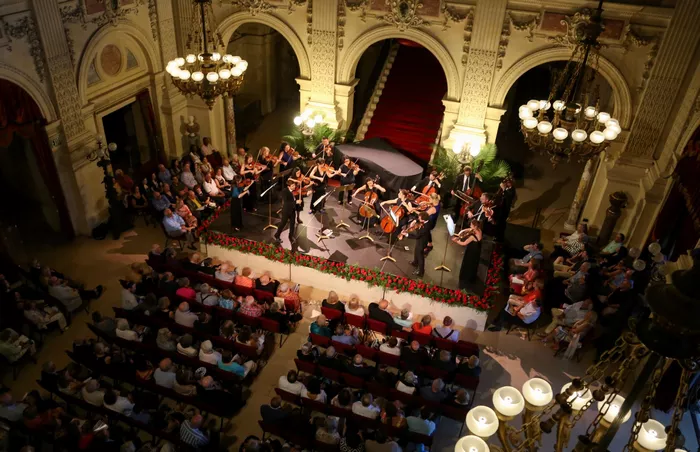In the annals of classical music history, few composers command as much reverence and admiration as Joseph Haydn. Often hailed as the “Father of the Symphony” and the “Father of the String Quartet,” Haydn’s prolific output and innovative spirit left an indelible mark on the musical landscape of the late 18th century. Among his vast repertoire of symphonic works, Symphony No. 104 stands as a crowning achievement, exemplifying Haydn’s mastery of form, melody, and orchestration. In this exploration, we delve into the nuances and brilliance of Symphony No. 104, shedding light on its historical context, structural intricacies, and enduring appeal.
Historical Context: Haydn’s Late Period and the London Symphonies
Composed in 1795 during the twilight years of his career, Symphony No. 104 belongs to a set of twelve symphonies commonly referred to as the “London Symphonies.” These works were written for Haydn’s highly successful visits to London, where he enjoyed immense popularity and financial security. Symphony No. 104, in particular, was the final symphony Haydn composed and premiered during his second visit to London in 1795.
Haydn’s London sojourns marked a significant chapter in his life, offering him a platform to showcase his musical prowess to eager audiences in one of Europe’s cultural hubs. The patronage of the impresario Johann Peter Salomon facilitated these visits, providing Haydn with the resources and support necessary to present his compositions to a receptive audience. Symphony No. 104, with its grandeur and sophistication, epitomizes the culmination of Haydn’s creative journey and his ability to captivate listeners with his inventive orchestration and structural ingenuity.
Structural Ingenuity: A Symphony Unfolds
Symphony No. 104 unfolds in the traditional four-movement structure typical of Haydn’s symphonies during the Classical period. Each movement showcases Haydn’s mastery of form and his penchant for thematic development, imbuing the work with a sense of coherence and dynamism.
The first movement, marked Adagio – Allegro, opens with a majestic introduction featuring bold brass fanfares and solemn string passages. This leads into the spirited Allegro section, where the main thematic material is introduced and elaborated upon through various developmental techniques. Haydn’s skillful manipulation of texture and orchestration creates a sense of tension and release, keeping the listener engaged from start to finish.
The second movement, marked Andante, offers a contrast in mood and character, featuring lyrical melodies and lush harmonies. Here, Haydn showcases his gift for crafting poignant melodies that tug at the heartstrings while maintaining a sense of elegance and restraint. The orchestration is delicately balanced, with the strings taking center stage accompanied by woodwind flourishes and subtle brass accents.
The third movement, marked Menuetto: Allegro, presents a lively dance-like interlude, characterized by its rhythmic drive and buoyant energy. Haydn’s wit and charm shine through in this movement, as he playfully juxtaposes contrasting themes and orchestrations to create a sense of whimsy and delight. The trio section offers a brief respite from the lively main theme, introducing a more lyrical melody before returning to the spirited minuet.
The final movement, marked Finale: Spiritoso, brings the symphony to a thrilling conclusion with its triumphant fanfares and exuberant energy. Haydn showcases his mastery of counterpoint and orchestration in this movement, weaving together multiple thematic strands with consummate skill and precision. The symphony culminates in a majestic coda, bringing the work to a resplendent close and leaving the audience exhilarated by its brilliance.
Enduring Appeal: A Testament to Haydn’s Genius
More than two centuries after its composition, Symphony No. 104 continues to captivate audiences with its timeless beauty and innovative spirit. Its enduring appeal lies in its ability to transcend the boundaries of time and space, speaking to listeners across generations and cultures.
Haydn’s Symphony No. 104 stands as a testament to the enduring power of music to inspire, uplift, and unite. In its majestic themes and sublime harmonies, we glimpse the genius of a composer who defied convention and pushed the boundaries of musical expression. As we continue to explore and celebrate the legacy of Joseph Haydn, Symphony No. 104 remains a shining beacon of his unparalleled artistry and creativity.
Conclusion
In conclusion, Joseph Haydn’s Symphony No. 104 stands as a pinnacle of classical music repertoire, showcasing the composer’s ingenuity, craftsmanship, and enduring legacy. From its majestic opening to its triumphant finale, the symphony continues to enthrall audiences with its beauty, depth, and timeless appeal. As we immerse ourselves in its sublime melodies and rich orchestration, we bear witness to the genius of a master composer whose music continues to resonate with listeners around the world.

